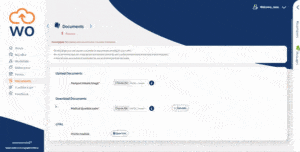What’s the starter experience like for a person who joins your business?
The initial onboarding experience is an essential part of the process to get right because it helps to determine the future relationship a person will have with their employer – whether it’s good or bad.
And for so many new starters, it’s not good. The recent Welcome Aboard survey found that 46% of UK employees have had negative onboarding experiences, causing 11% to drop out of the process.
But identifying the need to improve an onboarding process is the easy part, what’s much harder is figuring out what makes for a welcoming and engaging starter experience. Here’s a look:
What is employee onboarding?
Onboarding covers all of the tasks that are required to convert a successful candidate into a productive new worker. This starts the moment a role has been accepted and covers all of the administrative work such as contracts, offer letters, reference checks and first-day preparations.
It also covers any steps that are taken to help integrate a person into their new role with welcome messages and background information about the company and workplace they are joining.
What do we mean by the onboarding ‘engagement’?
Engagement refers to how much of a bond a successful candidate feels to the employer as they go through the onboarding process. Do they enter the organisation enthused and committed to their new role or do they arrive frustrated and with negative initial impressions?
This can be determined by everything they experience during the onboarding phase – from the time it takes to the style, frequency and tone of the communications they receive. Engagement is a result of getting each of these areas working together, creating a positive experience.
What makes for a positive onboarding experience?
The quality of an onboarding experience is obviously subjective. What some people may appreciate, others will find frustrating. But there are some common areas which candidates look for when joining a company:
A fast process
One of the main problems with onboarding is simply the time it takes to complete. After the elation of accepting a job, candidates can often be left waiting weeks or months before they can start. The longer it takes, the higher the risks are that prospective hires will drop out.
Online paperwork
A cloud-based process to handle all the documents and form-filling that’s required helps to ease the ‘pain’ for onboardees. They have instant access to all the info they need with no need for them to print or post documents.
No mix-ups
Starting a new role can be stressful and anxiety-inducing enough without any admin mix-ups or mistakes to deal with. Any kind of inefficiency or errors provides the worst possible initial impressions for a new starter.
Mobile ready
An onboarding process that can be completed via a smartphone is a major plus. It’s the kind of convenience that people are accustomed as so many administrative tasks are now handled via cloud-based tools.
Great communications
Regular, friendly and welcoming communications are vital. A common complaint with onboarding is when candidates who feel ‘out of the loop’. With minimal information from an employer, they become anxious and stressed about what’s happening – often imagining the worst.
Small touches
Even the smallest gestures can transform the onboarding experience. Whether it’s a personal call from a team leader or a welcome pack of treats to greet them on their first day, small touches can make a big difference.
How do you track the onboarding experience?
To improve the onboarding experience you need to find effective ways to track performance. A cloud-based management solution such as Webonboarding includes integrated feedback tools allowing new starters to rate their experience.
By tracking feedback over time, it helps to show how changes to the onboarding process can improve engagement for new starters. Along with tracking tools, including a post-start feedback session into the process can help make sure you’re getting things right.




